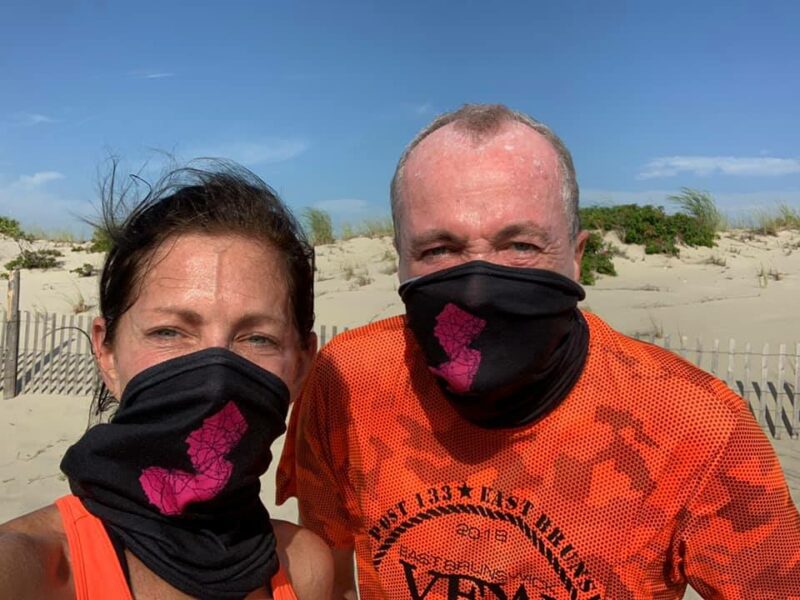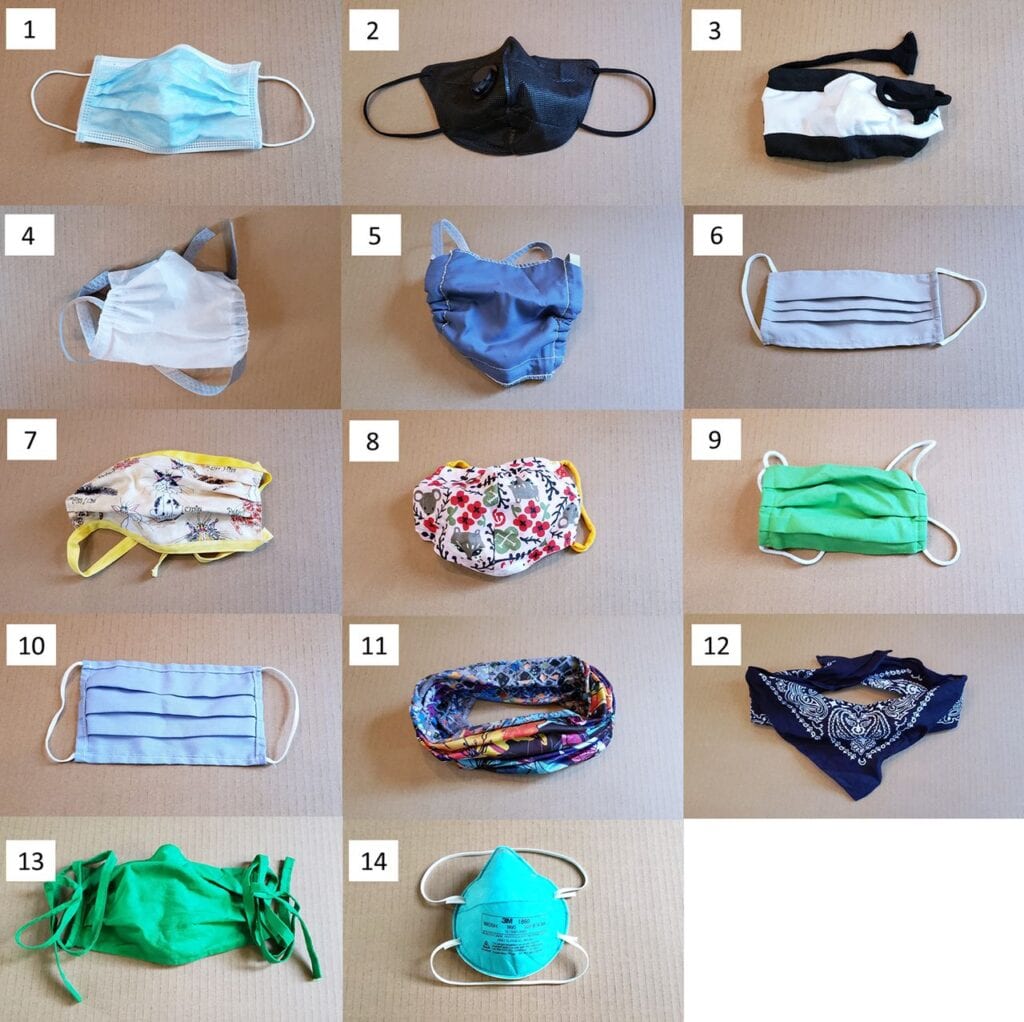SEASIDE PARK, NJ – A new study published by the American Association for the Advancement of Science found that the use of trendy bandanas and neck gaiters does very little, if anything to stop the spread of COVID-19 droplets. The study was conducted by researches at Duke University’s biomedical, chemistry, physics and medical departments.
Lately, as Governor Phil Murphy says his COVID-19 decision making is guided by science, Murphy now finds himself in an uncomfortable position of telling people, do as he says, not necessarily as he does. That’s because in recent photo-ops from the Jersey Shore, the governor and his wife Tammy have been out and about wearing custom printed neck gaiters, which according to this study, are essentially worthless when it comes to fighting and stopping COVID-19.
“Mandates for mask use in public during the recent COVID-19 pandemic, worsened by global shortage of commercial supplies, have led to widespread use of homemade masks and mask alternatives. It is assumed that wearing such masks reduces the likelihood for an infected person to spread the disease, but many of these mask designs have not been tested in practice,” the researches found. “We have demonstrated a simple optical measurement method to evaluate the efficacy of masks to reduce the transmission of respiratory droplets during regular speech. In proof-of-principle studies, we compared a variety of commonly available mask types and observed that some mask types approach the performance of standard surgical masks, while some mask alternatives, such as neck fleece or bandanas, offer very little protection. Our measurement setup is inexpensive and can be built and operated by non-experts, allowing for rapid evaluation of mask performance during speech, sneezing, or coughing.”

Droplet transmission through face masks. (A) Relative droplet transmission through the corresponding mask. Each solid data point represents the mean and standard deviation over 10 trials for the same mask, normalized to the control trial (no mask), and tested by one speaker. The hollow data points are the mean and standard deviations of the relative counts over four speakers. A plot with a logarithmic scale is shown in Supplementary Fig. S1. (B)The time evolution of the droplet count (left axis) is shown for representative examples, marked with the corresponding color in (A): No mask (green), Bandana (red), cotton mask (orange), and surgical (blue – not visible on this scale). The cumulative droplet count for these cases is also shown (right axis).
The scientists used a laser beam and cylindrical lense to measure the amount of droplets emitted from a human being while wearing each variety of PPE devices, ranging from N95 respirators to bandanas and fleece face coverings.
“We tested 14 commonly available masks or masks alternatives, one patch of mask material, and a professionally fit-tested N95 mask. For reference, we recorded control trials where the speaker wore no protective mask or covering,” the study’s report said. “Each test was performed with the same protocol. The camera was used to record a video of approximately 40 s length to record droplets emitted while speaking. The first 10 s of the video serve as baseline. In the next 10 s, the mask wearer repeated the sentence “Stay healthy, people” five times (speech), after which the camera kept recording for an additional 20 s (observation). For each mask and for the control trial, this protocol was repeated 10 times. We used a computer algorithm (see Materials and Methods) to count the number of particles within each video.”
You can read the complete study report here.

